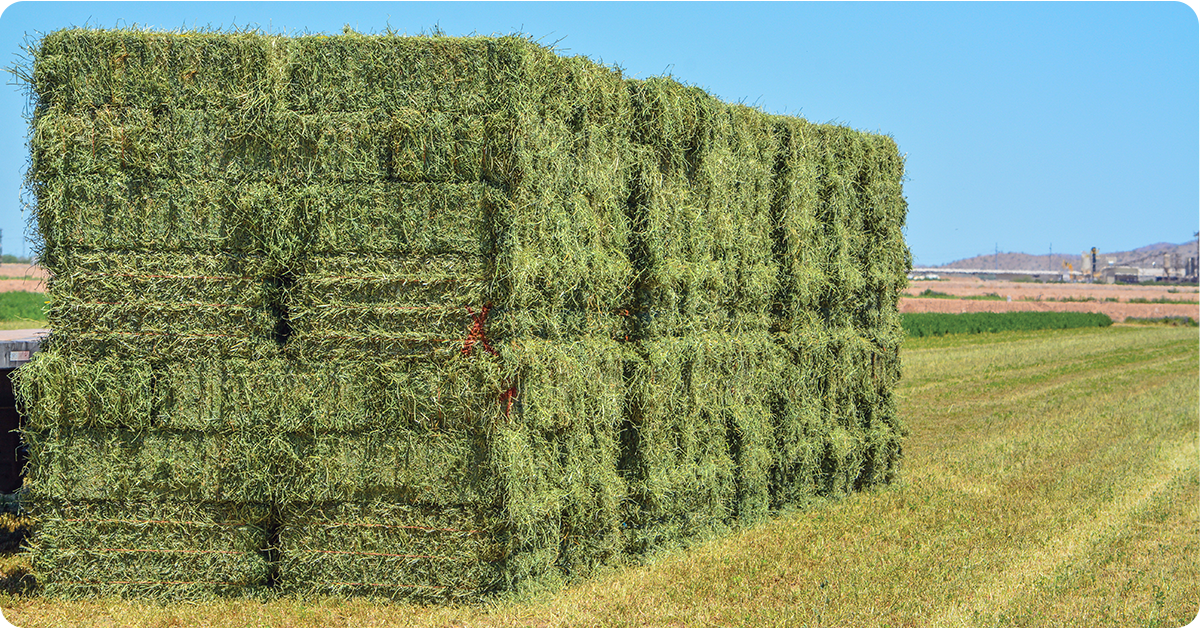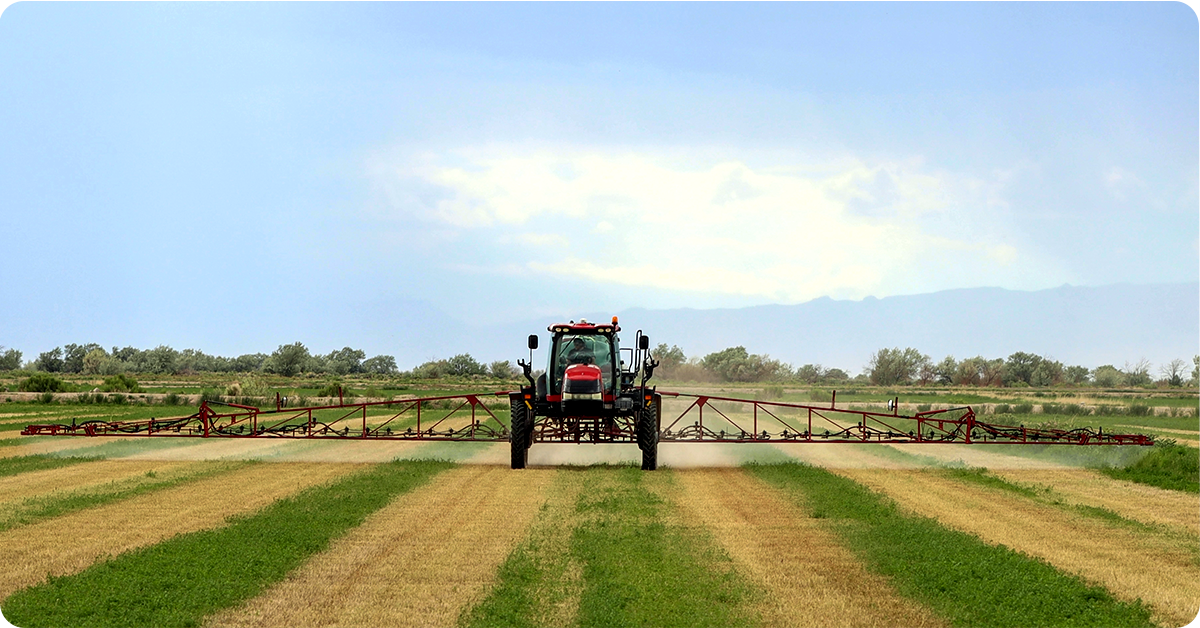
Now’s the time for a fall planting strategy. As the growing season ends, consider which fall fertilizers and soil prep methods work best as you rotate crops. Keep these fall planting tips in mind as you strategize your next season.
Planting Fall Grain
Ready to rotate your field from alfalfa to grain?
The Roundup PowerMAX label allows alfalfa to be harvested and fed to livestock. A fall application to your field prior to harvest helps dry down the alfalfa while still allowing you to harvest your crop. Since you do not have to wait for regrowth after harvesting to make your herbicide application, this gives you an advantage. Harvesting that last cutting of alfalfa, then quickly working the soil to prepare for planting fall grain saves you time and money.
Going from corn to grain?
Let’s first consider the corn stubble left behind. When worked into the soil, this stubble ties up nitrogen while bacteria in the soil starts to break it down. Remember: For every 6 inches of stubble you leave, your new crop needs an additional 100 pounds of urea or 50 units of nitrogen to make up for the nitrogen being tied up. This helps balance the carbon-to-nitrogen ratio in your farm's soil. Adding a quality biological product to your fertilizer plan helps break down the corn stalks too. In addition, a late-season application of biologicals helps fill the deficiency of “bugs'' in your soil after the rigors of growing a crop when soils are often dry and compacted. We recommend using PrimAgro C-Tech liquid biofertilizer to restore vital microbes that may have been lost throughout the year.

Planting Fall Alfalfa
One of the most important things to consider when planting alfalfa is to have a clean and firm seedbed. Typically, when planting fall alfalfa, you are either (1) coming out of a small grain crop or (2) using a field that was fallow for a season.
Either way, establishing a clean and firm seedbed is key. Roundup is a good solution to clean up any weeds after harvesting your grain, and it allows for immediate planting of alfalfa. Following the herbicide application, work the soil using a Schmeiser or Cultipacker to firm and smooth out the seedbed. This will give you the best chance at good seed-to-soil contact in establishing a new alfalfa stand.
Keep in mind that in our geography, alfalfa must be planted by mid-August to ensure good root development so the stand survives winter. The planting time may even be a little sooner depending on your soil, higher elevations or if it looks to be an earlier freeze year. Four inches of top growth ensures adequate roots. Adding a liquid fertilizer starter like AgroLiquid Pro-Germinator greatly enhances root development in young alfalfa and increases the chances of winter survival.

Fall Fertilizer Needs
First thing: test your soil before applying fall fertilizer. Have your local IFA crop advisor take soil tests on every field you are planting. A good time to do this is right after you work the soil, but before you plant.
It takes about a week to get the results back on soil tests. If you have to do it before you work the field, that can be done as well. This soil test tells us what the soil needs to achieve the yield goals for the specific crop you are planting.
Once you have the soil test results, your IFA crop advisor will help you plan for all your fertilizer needs — from starters to in-season fertility. Put all of your crop’s phosphate and potassium needs into the fall starter fertilizer. Making sure you have enough phosphorus and potassium available for fall growth is important for root development, winter survival and tillering for the spring crop, as mentioned earlier in the article. Developing this robust and deep root system is also beneficial in spring and summer when our soils are often dry, and we may have limited irrigation.
Dry Fertilizers
If you are using dry fertilizers, spread it before finishing off your soil prep. Broadcast the fertilizer, then a little dirt on top for best results. Crops use nitrogen much more efficiently when incorporated into the soil, instead of on the soil surface. This keeps the nitrogen from volatilizing if the soil temperatures are still high enough to create such a loss, and places the fertilizer closer to the seed. Lastly, the process gives plants more energy and the ability to produce a better crop.
Liquid Fertilizers
We typically recommend using AgroLiquid Fertilizers because of low salt and high efficiency. They are safe and offer a complete line of nutrients and biologicals, but even these products need to be used appropriately and with caution. Using liquid fertilizer incorrectly may damage the seed and plant. Make sure to consult your IFA Crop Advisor for recommendations.
Using liquid fertilizers through a planter allows nutrients to be applied right where they need to be based on the results of your soil test. For a grain crop, add nitrogen post-planting as well. Too much nitrogen in the starter can burn the seed and kill it.
AgroLiquid’s High NRG-N is a low slat slow-release nitrogen that helps build roots and push yield and quality up. Overall, we are a fan of using liquid fertilizers. They are available to the plant much faster than dry fertilizer, plus liquid fertilizers allow you to react to your crops' needs as they arise. You can push the bang for the buck with liquid fertilizers.

Monitor Weeds and Soil Moisture
Once your fall crop is planted, keep an eye on it as it progresses. Weed pressure can be a devastating problem for a young crop. Soil moisture and other issues can also arise, and the sooner you deal with any of these problems, the better you will be.
Whenever you see any issues or items of concern, we encourage you to reach out to your IFA Crop Advisor. IFA agronomists are the local experts here to help improve your crop. Thank you for your continued support of IFA and we look forward to working with you in the coming season.
Discover IFA's Agronomy Services
Written by Kurt Hansen, CCA & Fertilizer Buyer, IFA Garland Agronomy Center, and originally published in the IFA Cooperator magazine (vol. 89, no. 3) Fall 2023.
Kurt Hansen is a Certified Crop Advisor and Fertilizer Buyer where he specializes in product and commodity procurement and providing recommendations on fertilizers, herbicides and insecticides. Before becoming a CCA, he graduated from Southern Utah University with a bachelor’s degree in agriculture sciences and industry with an emphasis on plant science. When not working with our vendors to keep IFA Agronomy locations filled with the highest quality fertilizers available at the best value.

